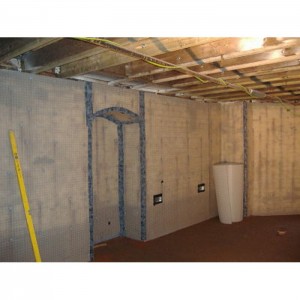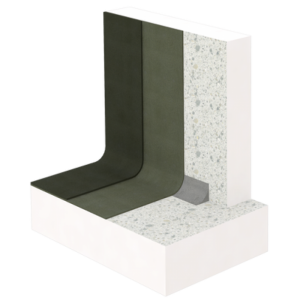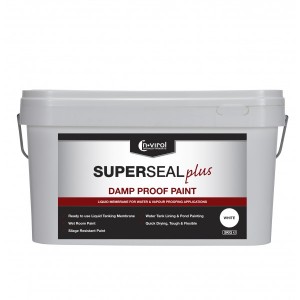News
How to tank a cellar
 How to tank a cellar
How to tank a cellar
How you go about tanking a Cellar is determined by two key points. First point is what use do you want to put the Cellar to. In basic terms, do you want to create some additional storage so you can free up some space in the main living area or do you want to create some habitable space such as a Games room or a bedroom.
Once you have decided on the use for the Cellar you then have to establish the risk of dampness or even the risk of flooding.
These decisions pretty much determine the method of tanking.
There are three ‘tanking’ systems available for the internal walls of a cellar. They are:
1) Tanking slurry or render otherwise called Cementitious tanking. A one component compound you add water too and apply by brush or trowel.
2) Liquid paint on membranes that once dry form to a seamless membrane on walls and floors.
3) Cavity drain membranes which are in basic terms a dimpled plastic sheet system intended to manage water ingress or allow damp to evaporate behind the membrane.
If you simply want to damp proof a Cellar to store some tools, gardening equipemnt, etc and the conditions are pretty dry then tanking slurry or damp proof paint are fine for the purpose. The key to success is getting a good bond with the product you are applying to the wall and floor you are applying it on. For instance, there would be no point in applying these products to a previously applied damp proof paint which is peeling and blistering as the bond of your product will only be as good as the bond of the old system.
The key to these types of products are low risk of damp or water ingress and thorough preparation of the walls and floor to get a sound bond.
Always follow the manufacturers application instructions.
Be mindful that paints and renders allow water vapour through the walls and floor so you need to ensure you have some form of ventilation as otherwise metal items can rust or fabrics can get mouldy.
If you want to have a dry Cellar for storage but for high value items including important documents but have a relatively dry Cellar then I would go with the Cavity drian membrane system and batten out or put in a stud frame so in basic terms you have a dry lining system. This allows for the walls the breathe behind the membrane but no damp, water or vapour pass through. Very important to introduce ventilation to stop condensation behind the dry lining.
If you want to use your Cellar for habitable use you would be best advised to use Cavity Drain Membrane. Installed with a sump and pump and drainage channel provides you with a fully servicable system which if installed by an approved contractor would be supported by a 10 year guarantee. If the Cellar is dry the owner can make a decision on using drainage or not. If the risk of damp or water ingress is low then you can install membrane without a sump and pump but the only guarantees with this system would be a product guarantee for the membranes used.
We have helped and advised homeowners, builders, damp proofers, basement contractors and architects on the systems available and how to install them. For advice on your project call us on 01329 235252 and we will be pleased to help.








Hi
I have lived in my house >10 years, it is in an elevated location and our cellars that cover the complete footprint of the property are bone dry i.e. never any free water on the floor (ever). The walls are currently bare brick. I am considering converting the cellars to living space. I have no problem installing a vapor barrier behind the drylining, but do I really need to install a perimeter drain system? I will not need a pumped system as we have 3 x deep drain gully’s, one located at the cellar exit door and one in each of the light wells. It should also be noted, that I may deepen the floor level by ~300mm for which we have dug a test pit and this does not extend below the footings. If we lower the floor can I precast a perimeter channel into the new concrete floor as opposed to installing aquachannel, peagravel etc.etc??
If you do lower the floor it would make good sense to precast a perimeter channel to be evacuated to an external gully. The Basedrain, Waterguard or Aqua Channel range of perimiter channels include Jetting Ports within the ancillary range. This is a point whereby you can routinely flush out the perimeter channel. By incorporating a maintainable drainage detail within the cavity membrane system you would conform to the British Standard for a cavity membrane Type C installation which in turn, would be adopted by Building Control and as such, you would realise the full value of the conversion and more than get your investment back.
If you choose not to include a sump and pump system on the basis the basement never floods you do slightly run the gauntlet of the ‘what if’ scenario in respect of water ingress, especially if you have a high end fit-out but the gravity drain system and stud profile of the floor and wall membrane will provide you with a considerable drainage capacity that as you say, may never ever be needed.
Happy to help with any technical assistance.